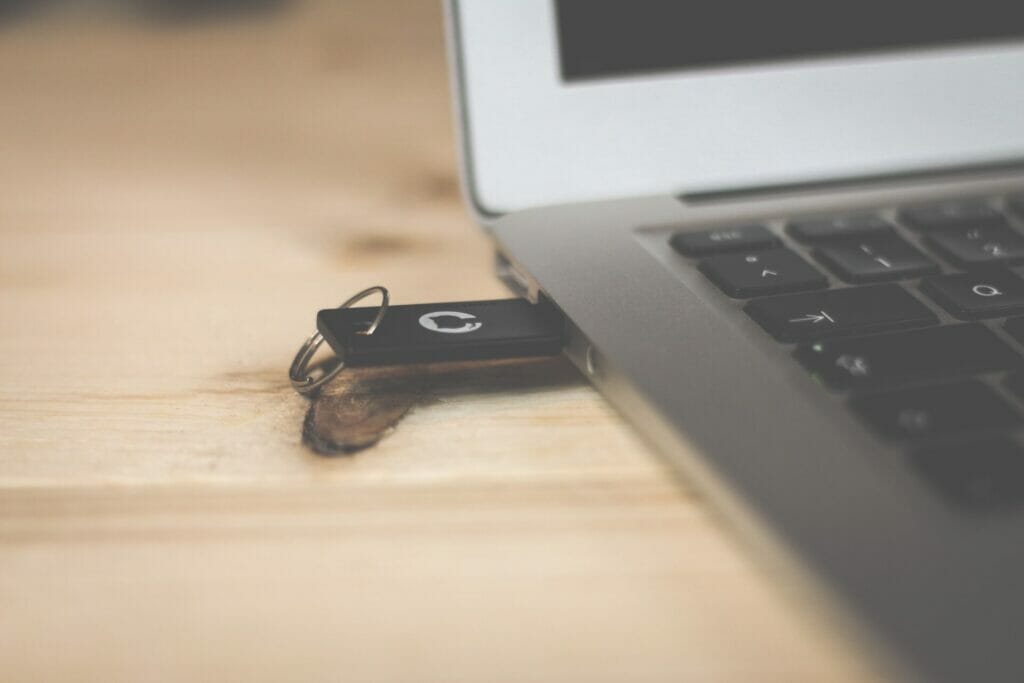Laptops are crucial to personal and professional life. Regardless of the laptop’s configuration or features, power is a fundamental part that makes it operate seamlessly. What if you weren’t able to get access to power anywhere? You left your charger at home, and you’re almost out of juice. It’s possible that your charger is just worn-out and has finally given up on you after all this time. Sometimes, charging itself isn’t possible because of a faulty port whether you don’t have a charger or your phone won’t charge, it’s worth noting that the right USB cable could help. How? Let’s find out!

Can I charge a Laptop with a USB?
There are many reasons why this could happen. One of the main factors is the type of USB port on your laptop. When you unplug your current wired mouse or keyboard, you will notice a rectangular component on the end of the cord.
This is used on your computer and is called a type-A USB connector. The most common type of USB connector is the USB type port. The USB-type port is used in things like smartphones, for example. Type A USB ports can charge your smartphone, but they cannot power a laptop. In contrast to Type 1, USB 3.1 (Type C/ USB-C) can exchange a large amount of data and also produce enough wattage to charge a laptop with USB
Type C is shaped more like an oval than a square. It can provide a higher wattage and it charges your laptop significantly faster with its high-wattage connection design. This means that if you have a newer computer, you’ll need to make sure you’re using the type C charger, not the A charger.
Is USB Charging Better
USB Type-C only recently made an appearance in consumer electronics. This is because it has some cool new features that previous type connections did not have.
Trimmer: The new port is just one-third the height and half the width of a standard USB port and is slightly larger than Apple’s Lightning or micro-USB connectors.
Reversible: Unlike some older USB cables, there is no wrong way to insert a Type-C. You can literally put it in any way.
Faster: Type-C ports can transmit data at one of the fastest rates with USB 3.1, which is capable of transferring data up to 10 gigabits per second.
Powerful: This new power adapter has an output capability of up to 100 watts, enough to power a laptop.
More Flexible: Type-C ports can be very useful, especially when you have older devices that don’t support them. Adapters make them compatible with new technology, like Display ports and Ethernet.
Advantages and Disadvantages of charging with USB:
USB Type-C has advantages and disadvantages. The various USB extensions can be confusing, because not all connectors support the latest versions of the connector, such as USB Power Delivery or Alternate Mode. Another issue with USB Type-C is that it can be challenging for a business to implement because it needs to be well-defined and labeled. With “USB C” only referring to the appearance of the ports, devices, and cables, you need to make sure you’re using the right one. The USB interface is not a listed hardware interface. There is no information on the USB-C power charger’s specifications, such as data transfer speed, power availability, or data and interface protocols.
Conclusion:
Charging your laptop through USB anchorages may not be an effective system of charging your laptop. They give lower power and take important time to charge your laptop. Hence, you’re advised to use the bowl that came with your laptop. This Prevents your laptop battery from weakening and increases the lifetime of your laptop.
